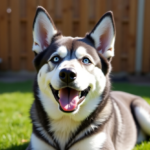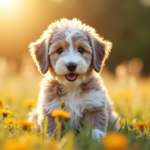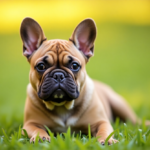The Siberian Husky is one of the most captivating and energetic dog breeds out there, instantly recognizable by its striking blue eyes, thick double coat, and wolf-like appearance. These dogs are not just pretty faces—they were originally bred to pull sleds over icy terrain, showcasing their incredible strength and endurance. Owning a Siberian Husky is an adventure in itself. They are full of energy, love outdoor activities, and are known for their mischievous yet friendly nature. If you’re looking for a dog that can keep up with your active lifestyle, this breed will never disappoint.
But before you rush to bring a Siberian Husky or one of its popular crossbreeds (like the Pomsky or Husky Lab) into your life, there are a few important things to know. This breed isn’t for the faint of heart—they need constant exercise, regular grooming, and lots of attention to stay happy and healthy. Plus, their strong-willed, independent streak can make training a challenge. Want to learn how to take care of this incredible breed and decide if it’s the right fit for your family? Keep reading to discover everything you need to know about the Siberian Husky, from their grooming and health needs to their playful, energetic personalities
Overview of the Siberian Husky
The Siberian Husky is a friendly and energetic dog breed, originally bred to pull sleds in cold regions. Known for their striking appearance, they have a thick double coat, often blue or multi-colored eyes, and a playful personality. While they are loyal and affectionate, Siberian Huskies also have a strong independent streak, which can make training a bit challenging. They need a lot of physical exercise and mental stimulation to stay happy and healthy. Grooming is essential, especially during shedding seasons. Despite their robust nature, they are prone to some health issues, such as hip dysplasia and cataracts. With proper care and attention, Siberian Huskies can make excellent companions, particularly for active families.
| Category | Details |
| Breed Origin | Siberia, originally bred to pull sleds |
| Size | Medium-sized, 20-24 inches in height, 35-60 pounds |
| Coat Type | Thick double coat, sheds heavily during shedding seasons |
| Temperament | Friendly, playful, energetic, independent |
| Exercise Needs | High (at least 1-2 hours daily) |
| Grooming Requirements | Regular brushing, more frequent during shedding periods |
| Lifespan | 12-15 years |
| Common Health Issues | Hip dysplasia, cataracts, hypothyroidism |
| Training | Can be challenging due to independence, requires patience |
| Good with Children? | Yes, generally friendly and playful |
| Apartment-Friendly? | Not ideal, unless given sufficient outdoor exercise |
| Prey Drive | High, may not be suitable for homes with small animals |
| Fun Fact | Known for howling instead of barking |

History of the Siberian Husky
The Siberian Husky has a rich and fascinating history that traces back to Siberia, where it was bred by the Chukchi people, a semi-nomadic tribe in northeastern Asia. The Chukchi needed a strong and reliable dog that could pull sleds across long distances in extreme cold. The Siberian Husky was developed for this purpose, combining speed, endurance, and strength to meet the tribe’s transportation needs.
In 1908, the Siberian Husky was introduced to Alaska during the Gold Rush, where it was used in sled-dog racing. The breed’s speed and stamina made it an excellent racing dog. The Siberian Husky’s fame grew in 1925 when a team of these dogs helped deliver life-saving medicine to Nome, Alaska, during a diphtheria outbreak. Since then, the Siberian Husky has become a popular pet across the world, admired for both its working abilities and its friendly nature.
Physical Characteristics of the Siberian Husky
The Siberian Husky is easily recognizable due to its stunning appearance. Let’s break down what makes this breed stand out:
Size and Weight
The Siberian Husky is a medium-sized dog with a well-balanced build. Males typically weigh between 45 to 60 pounds, while females range from 35 to 50 pounds. They stand about 20 to 24 inches tall at the shoulder, giving them a sleek, athletic look that complements their energetic personality.
Coat and Colors
One of the Siberian Husky’s most striking features is its double coat, which protects it from the cold. The outer coat is straight and thick, while the undercoat is soft and dense. This double coat helps the dog endure freezing temperatures.
Siberian Huskies come in a variety of colors, including black, grey, red, and even pure white. Many Siberian Huskies have markings on their faces that give them a distinctive look. These markings often appear as masks, adding to the dog’s wild, wolf-like appearance.
Eyes
The Siberian Husky is famous for its striking blue eyes, but their eyes can also be brown, amber, or a mix of both. Some Siberian Huskies have one blue eye and one brown eye, a condition known as heterochromia, which adds to their unique charm.
Tail
The Siberian Husky’s tail is bushy and is often carried in a sickle shape over its back. This feature helps them keep warm in cold climates, as they often curl up and use their tail to cover their nose when they sleep.
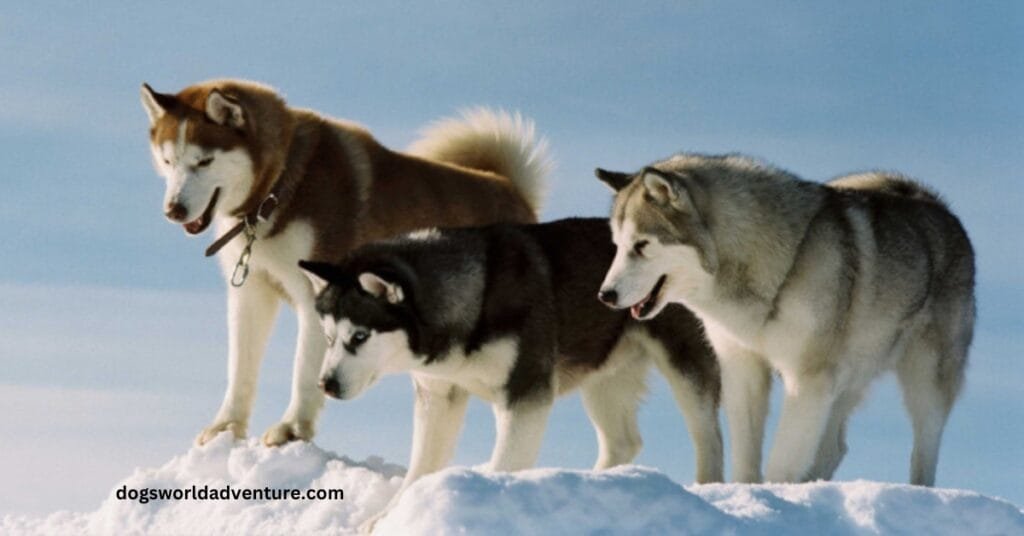
Personality and Temperament of the Siberian Husky
The Siberian Husky is known for its friendly and outgoing nature. Despite its strong and sometimes wild appearance, the Siberian Husky is a gentle and loving dog that enjoys being around people. Here are some key traits that define its personality:
Friendly and Social
The Siberian Husky is highly social and enjoys the company of both people and other dogs. They are not typically aggressive and are known for being friendly to strangers, making them poor guard dogs. Their lack of territorial instincts means they are more likely to greet intruders with a wagging tail rather than a bark.
Energetic and Playful
Siberian Huskies are high-energy dogs that need plenty of exercise and mental stimulation. They love to play and will gladly spend hours running around or engaging in games. Without enough activity, a Siberian Husky can become bored, which may lead to destructive behavior such as chewing or digging.
Independent Thinkers
One of the most interesting aspects of the Siberian Husky’s personality is its independent nature. This breed was developed to think and act on its own while pulling sleds, which means they can be a bit stubborn at times. Training a Siberian Husky requires patience, as they may choose to do things their way rather than immediately following commands.
Affectionate with Family
Although the Siberian Husky has a strong independent streak, it is also very affectionate with its family. This breed enjoys being part of a pack, and it will form close bonds with its owners. Siberian Huskies are great with children and make excellent family pets for active households.
Is a Siberian Husky the Right Dog for You?
The Siberian Husky can be an incredible companion, but it’s important to understand that this breed has specific needs. Here’s what you should consider before bringing a Siberian Husky into your home:
Space and Activity Level
Siberian Huskies are not well-suited for apartment living unless they receive plenty of outdoor exercise. This breed thrives in homes with large, fenced yards where they can run and play. If you’re an active person who enjoys outdoor activities like running, hiking, or biking, the Siberian Husky can be a perfect match for your lifestyle.
Exercise Needs
The Siberian Husky has a high level of energy and needs daily exercise to stay happy and healthy. A minimum of 1-2 hours of exercise each day is recommended. This can include long walks, runs, or playtime in a safe, enclosed area. Without enough physical activity, the Siberian Husky can become bored and may develop behavioral issues.
Training Challenges
Because of their independent nature, Siberian Huskies can be difficult to train, especially for first-time dog owners. While they are intelligent and capable of learning commands, they may choose to ignore them if they don’t see the benefit. Consistent, positive reinforcement training is key, and it’s important to start training your Siberian Husky from a young age.
Grooming Needs
The Siberian Husky’s thick double coat requires regular grooming. They shed heavily, especially during seasonal changes in the spring and fall, a process called “blowing coat.” Brushing your Siberian Husky a few times a week will help control shedding and keep their coat healthy.
Temperament with Other Pets
While Siberian Huskies are generally good with other dogs, they have a high prey drive. This means they may not be the best choice for homes with small animals such as cats, rabbits, or birds. Early socialization and proper training can help, but it’s important to monitor your Siberian Husky around smaller pets.
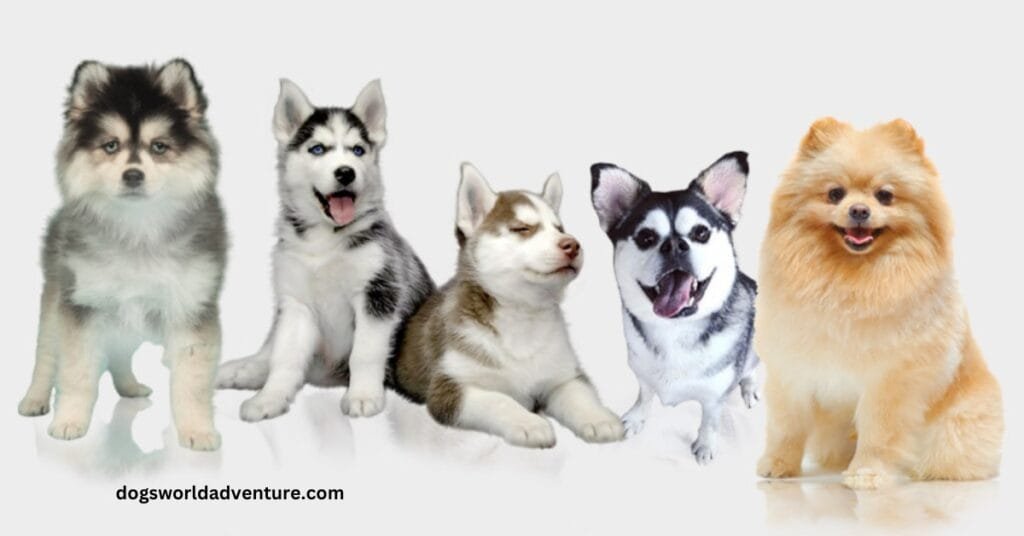
Training Your Siberian Husky
Training a Siberian Husky can be both rewarding and challenging. This breed is intelligent, but their independent nature means they may not always be eager to follow commands. Here’s how to approach training with a Siberian Husky:
Start Training Early
The best time to start training a Siberian Husky is when they are still a puppy. Early socialization and training will help establish good behavior and prevent bad habits from forming. Puppy training classes are a great way to expose your Siberian Husky to new environments, other dogs, and people.
Use Positive Reinforcement
Siberian Huskies respond well to positive reinforcement. This means rewarding your dog with treats, praise, and playtime when they do something correctly. Avoid harsh punishment, as this can lead to fear or stubbornness. Instead, focus on encouraging good behavior and being patient.
Leash Training
Because the Siberian Husky loves to run, leash training is crucial. This breed has a tendency to pull on the leash, especially if they see something that catches their interest. Using a no-pull harness and practicing consistent leash training can help manage this behavior.
Crate Training
Crate training is a useful tool for housebreaking and keeping your Siberian Husky safe when you’re not home. When introduced properly, most Siberian Huskies will come to see their crate as a safe space. Make sure to never use the crate as a form of punishment, and always provide positive experiences with it.
Caring for Your Siberian Husky
Caring for a Siberian Husky involves meeting their exercise, grooming, and health needs. Here’s how you can provide the best care for your Siberian Husky:
Feeding Your Siberian Husky
The Siberian Husky has a moderate appetite compared to some other dog breeds. They require a well-balanced diet that is rich in protein to support their active lifestyle. Look for high-quality dog food that includes meat as the first ingredient. Avoid overfeeding your Siberian Husky, as this breed can be prone to weight gain if not properly exercised.
Grooming Needs for Siberian Husky
The Siberian Husky’s double coat sheds year-round, but they blow their coat twice a year in spring and fall. Regular brushing is essential to keep their coat healthy and to reduce shedding around your home. During shedding season, you may need to brush your dog daily. Bathing your Siberian Husky should be done only as needed, as over-bathing can strip the natural oils from their coat.

Exercise and Mental Stimulation
As mentioned earlier, Siberian Huskies need plenty of physical exercise to stay happy and healthy. In addition to regular walks, they enjoy activities like running, hiking, and even pulling a sled or cart. Mental stimulation is also important for this intelligent breed. Puzzle toys, obedience training, and agility exercises can help keep your Siberian Husky’s mind sharp.
Health Issues in Siberian Huskies
Siberian Huskies are generally healthy dogs, but like all breeds, they can be prone to certain health problems. It’s important to be aware of these issues to ensure your Husky receives proper care and attention. Below are some common health conditions found in Siberian Huskies:
Hip Dysplasia
This is a hereditary condition where the hip joint doesn’t develop properly, leading to pain and arthritis. Regular vet check-ups and maintaining a healthy weight can help manage this condition. In severe cases, surgery may be needed.
Cataracts
Siberian Huskies are prone to developing cataracts, which can cause cloudy vision and eventually lead to blindness if untreated. Cataracts often appear as a whitish film over the dog’s eyes, and surgery is sometimes required to correct the problem.
Progressive Retinal Atrophy (PRA)
PRA is a group of genetic diseases that cause the gradual deterioration of the retina, leading to vision loss and, eventually, blindness. Unfortunately, there is no cure for PRA, but dogs with this condition can still live happy lives in familiar environments.
Hypothyroidism
Hypothyroidism occurs when the thyroid gland doesn’t produce enough hormones, leading to symptoms like weight gain, lethargy, and a dull coat. This condition is usually treatable with daily medication and regular monitoring by a veterinarian.
Corneal Dystrophy
This is a hereditary condition that affects the cornea, causing a cloudy appearance in the eyes. It doesn’t usually cause pain but can affect vision. Regular vet visits can help monitor this condition.
Zinc Deficiency
Some Siberian Huskies can suffer from zinc-responsive dermatosis, where their bodies have trouble absorbing enough zinc from their diet. This can lead to skin issues such as hair loss, crusty skin, and lesions. Adding zinc supplements or changing the dog’s diet under a vet’s guidance can help manage this condition.
Allergies
Huskies can be prone to allergies, including food allergies and environmental allergies like pollen or dust. Symptoms can include itching, skin infections, and digestive issues. Identifying and managing the allergens with your vet’s help is key to keeping your Husky comfortable.
Epilepsy
Epilepsy is a neurological condition that can cause seizures. While it may sound scary, many dogs with epilepsy can live normal lives with the help of medication to manage seizures.
By being proactive and providing regular vet care, a healthy diet, and plenty of exercise, you can help reduce the risk of these health issues and ensure your Siberian Husky lives a long, healthy life. Always consult with your veterinarian if you notice any unusual symptoms or behavior in your dog.

Fun Facts About the Siberian Husky
Here are some fun and interesting facts about the Siberian Husky that you might not know:
- The Siberian Husky’s howl can be heard from miles away. They don’t bark as often as other breeds, but they are known for their howling.
- Siberian Huskies have been known to change the color of their coat as they grow older.
- This breed is known for its escape-artist tendencies. If you have a Siberian Husky, make sure your yard is securely fenced to prevent any adventurous escapes.
- The Siberian Husky was a key part of the famous 1925 serum run to Nome, Alaska, where they helped deliver medicine to save the town during a diphtheria outbreak.
- The Siberian Husky is often mistaken for the Alaskan Malamute, a larger and heavier breed that also pulls sleds.
Conclusion
The Siberian Husky is a remarkable breed that combines beauty, strength, and personality. Whether you’re looking for a loyal family pet or a companion for outdoor adventures, the Siberian Husky can be a great choice. However, it’s important to remember that this breed requires time, effort, and commitment to meet its exercise, grooming, and training needs.
By understanding the unique traits and characteristics of the Siberian Husky, you can provide the best care and enjoy a long, happy life with this amazing dog. Whether you’re drawn to its striking appearance or its playful nature, the Siberian Husky is sure to capture your heart.
FAQs
- How much exercise does a Siberian Husky need?
A Siberian Husky needs at least 1-2 hours of exercise daily. - Are Siberian Huskies good with children?
Yes, Siberian Huskies are generally good with children due to their friendly and playful nature. - Do Siberian Huskies shed a lot?
Yes, Siberian Huskies shed year-round and blow their coat twice a year during seasonal changes. - Can a Siberian Husky live in hot climates?
While Siberian Huskies are bred for cold climates, they can adapt to warmer environments if they have access to shade, water, and proper care. - Are Siberian Huskies difficult to train?
Siberian Huskies can be challenging to train due to their independent nature, but they respond well to positive reinforcement. - How long do Siberian Huskies live?
Siberian Huskies typically live between 12 to 15 years. - Are Siberian Huskies good with other pets?
Siberian Huskies can be good with other dogs, but their high prey drive means they may not be suitable for homes with small animals like cats. - How often should I groom my Siberian Husky?
You should groom your Siberian Husky at least a few times a week, especially during shedding seasons. - Do Siberian Huskies make good apartment pets?
Siberian Huskies are not ideal for apartment living unless they receive plenty of outdoor exercise. - What are common health issues in Siberian Huskies?
Common health issues include hip dysplasia, cataracts, and hypothyroidism.



